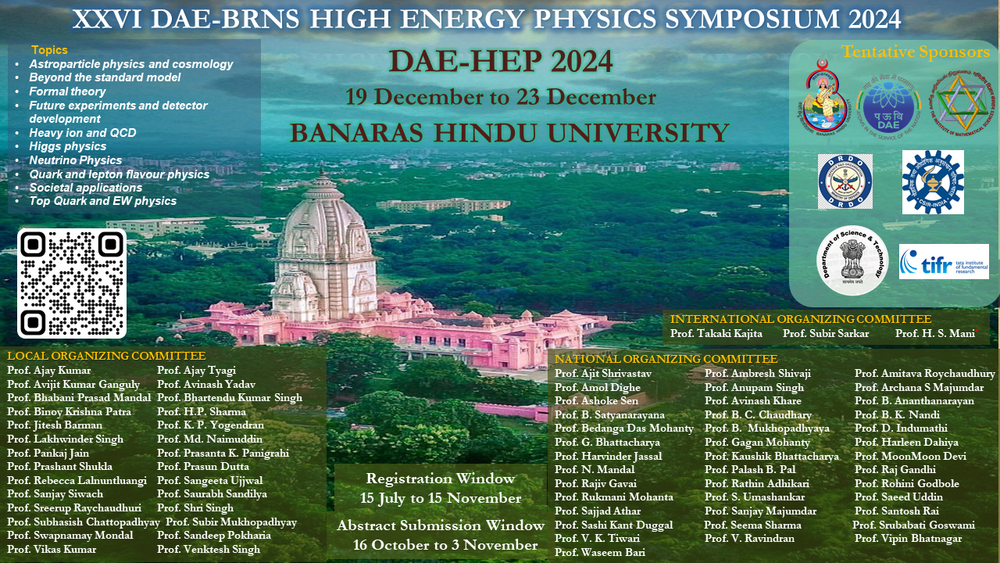Speaker
Description
A $SU(2)$ gauge theory coupled to the fermions transforming in the adjoint representation has many intriguing features. With Weyl fermions of two flavors, the system has $SU(2)_B \times U(1)_A$ global symmetry [1]. In this model of 2-color 2-flavor adjoint-QCD, there is a long-standing debate whether the low-energy dynamics is confining with spontaneously broken $SU(2)_B$ (this $SU(2)_B$-symmetry is referred to as chiral symmetry and its breaking as chiral symmetry breaking). The multiple lattice QCD simulations and theoretical studies suggest that $SU(2)_B$-symmetry remains unbroken in the strong coupling regime.
Here, we consider a matrix model of 2-color 2-flavor adjoint-QCD. Being a quantum mechanical model, this provides a simplified framework to numerically probe the status of the $SU(2)_B$-symmetry in the strong coupling limit ($g$ is the dimensionless Yang-Mills coupling constant and large $g$ implies strong coupling). We construct the low-lying energy eigenstates belonging to different representations of $SU(2)_B$ using a variational calculation. We find that the ground state in the extremely strong coupling limit is a) $SU(2)_B$-singlet and b) two-fold degenerate (as a result $U(1)_A$ is broken to $\mathbb{Z}_4$ and is consistent with findings in [1]). The lightest $SU(2)_B$-triplet is the 1st excited state of the system in the extremely strong coupling regime. As a consequence, the ground state in the strong coupling limit do not break the $SU(2)_B$ symmetry [2].
If we include a chiral chemical potential term $c \bar{\psi}\gamma^5 \gamma^0\psi$ to the Hamiltonian, the system undergoes one or two quantum phase transitions (QPTs) if we tune $c$. For strong coupling $g \gtrsim 3.5$, there is a single QPT and in this case, both phases has $SU(2)_B$-singlets as ground state. For weaker coupling, there are two QPTs separating three distinct phases and one of this phases has a $SU(2)_B$-triplet as ground state -- the ground state in this case breaks $SU(2)_B$-symmetry spontaneously.
References
[1] M. M. Anber and E. Poppitz, Phys. Rev. D, 98, 034026 (2018).
[2] A. Athenodorou, E. Bennett, G. Bergner, and B. Lucini, Phys. Rev. D, 91, 114508 (2015); A. Athenodorou, E. Bennett, G. Bergner, and B. Lucini, Phys. Rev. D, 104, 074519, (2021); A. Athenodorou, E. Bennett, G. Bergner, P. Butti, J. Lenz, and B. Lucini, arXiv:2408.00171 [hep-lat] (2024).
| Field of contribution | Theory |
|---|

